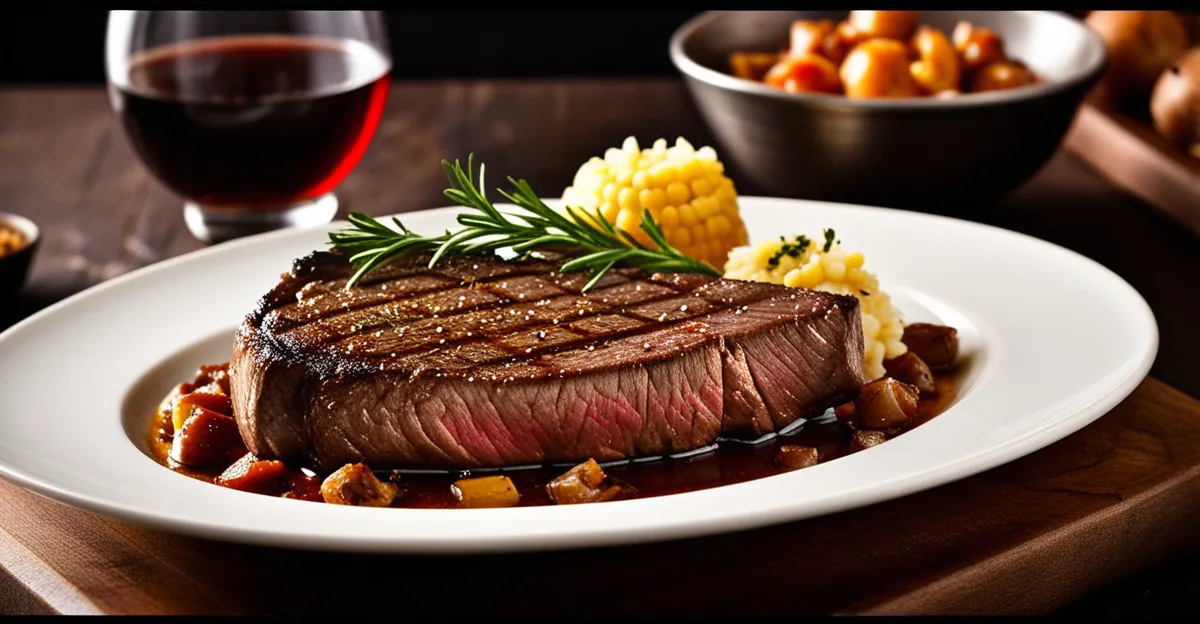Essential Ingredients and Preparation
When making steak and kidney pie, selecting the right ingredients is crucial. You’ll need diced beef steak, usually chuck or skirt, and fresh kidneys, often from lamb or beef. These provide the rich, hearty flavour that defines traditional British pies. To complement the meat, gather onions, beef stock, and Worcestershire sauce. Seasonings like salt, black pepper, and herbs such as thyme or bay leaves enhance the overall taste.
Prepping steak and kidneys involves particular care. Begin by trimming excess fat from the steak and cubing it evenly. For the kidneys, rinse thoroughly under cold water, then soak them in milk or water for 30 minutes to reduce strong odors. Slice them into bite-sized pieces afterward. Proper cleaning ensures a milder, cleaner flavour in the final dish.
Also to see : How can you prepare a delicious and authentic bubble and squeak?
Additionally, pastry plays a vital role in traditional British pies. Use firm, flaky shortcrust or puff pastry for the top and base. Finally, ensure all ingredients are well-seasoned and prepped before cooking to create the best flavour and texture in your steak and kidney pie.
Step-by-Step Cooking Process
The key to how to make steak and kidney pie lies in cooking each component properly before assembly. Start by browning the diced steak and kidneys in a hot pan, which seals in the flavours and improves texture. This initial sear helps develop a rich taste. Once browned, remove the meat and sauté onions in the same pan to build a flavour base.
Additional reading : What Are the Must-Try Traditional Dishes From the UK?
Next, deglaze the pan with beef stock and Worcestershire sauce, then return the steak and kidneys to the pot. Simmer gently for at least 1 to 2 hours until the meat is tender. This slow cooking breaks down connective tissues, ensuring a soft, melt-in-the-mouth filling.
To prepare a flavourful gravy, add herbs like thyme and bay leaves alongside salt and pepper. This mixture thickens slightly during simmering, creating a luscious sauce that clings to the meat.
For pie assembly, spoon the cooled filling into your pastry-lined dish. Cover with a pastry lid, crimp edges to seal, and cut slits for steam to escape. This careful construction helps prevent sogginess and maintains the classic texture of traditional British pies.
Baking and Serving Suggestions
When it comes to steak and kidney pie baking time, aim for around 30 to 40 minutes at 200°C (390°F) to achieve a golden, crispy pastry crust. This temperature ensures the pastry cooks evenly without burning, while the filling remains warm and succulent. For best results, bake the pie until the pastry turns a deep, rich brown and sounds hollow when tapped, indicating a perfect bake.
Serving traditional British pies like steak and kidney pairs wonderfully with classic sides such as creamy mashed potatoes, buttered peas, or steamed vegetables. These accompaniments balance the rich meat filling with freshness and texture, enhancing the overall meal experience. Don’t forget a dollop of tangy brown sauce or mushy peas for an authentic touch.
For presentation, slice the pie carefully with a sharp knife. The hearty filling should stay intact, showcasing tender meat coated in glossy gravy. Leftovers can be refrigerated for up to three days or frozen for longer storage. When reheating, cover the pie to retain moisture and crisp the pastry briefly under a grill for that just-baked feel.
Following these baking and serving tips elevates your steak and kidney pie, delivering the comforting taste expected from traditional British pies.
Historical Background and Expert Tips
Steak and kidney pie holds a significant place in British culinary tradition, dating back to the 19th century. It evolved from humble working-class origins into a beloved traditional British pie symbolising comfort and hearty flavours. Understanding this context helps appreciate why the pie’s rich filling and flaky pastry remain central to its identity.
For the perfect steak and kidney pie, expert advice stresses the importance of maintaining a balance between a tender filling and a crisp, flaky crust. Tips include chilling the pastry before baking to prevent shrinking and blind baking the base slightly for extra firmness. This keeps the pie from becoming soggy, preserving the classic texture.
Adapting the recipe for personal taste is straightforward; some chefs swap lamb kidneys for beef or add mushrooms for earthiness. Incorporating Worcestershire sauce or a splash of stout can deepen the gravy’s flavour, enhancing authenticity without overwhelming the dish. These subtle adjustments respect tradition while encouraging creativity.
Overall, respecting the pie’s history and applying practical tips ensures your steak and kidney pie embodies the comforting richness expected of traditional British pies. Explore these expert insights to elevate your next baking experience.






